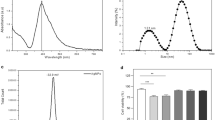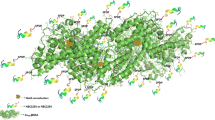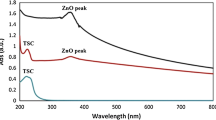Abstract
Bacterial infection has continued to be a leading cause of death or disability worldwide because of antibiotic resistance. Antibiotic agents specific to certain taxa of bacteria, i.e., narrow-spectrum antibiotics, have become useful because they can kill bacteria without resulting in broad-spectrum drug resistance. In this study, we describe a series of antibiotics based on combining gold nanoparticles (AuNPs) with aminosaccharides, even though these AuNPs or aminosaccharides by themselves are ineffective against any bacteria. The AuNP-based multivalent aminosaccharides can effectively and selectively inhibit the growth of Gram-positive bacteria (including drug-resistant superbacteria). In particular, aminosaccharide-modified AuNPs are effective against methicillin-resistant Staphylococcus aureus (MRSA), a particularly hard-to-treat strain. This report carves out a way to explore antibiotics by combining AuNPs and an aminosaccharide as multivalent nanostructures, neither of which by itself is effective as an antibiotic.

Similar content being viewed by others
References
Zhao, Y. Y.; Tian, Y.; Cui, Y.; Liu, W. W.; Ma, W. S.; Jiang, X. Y. Small molecule-capped gold nanoparticles as potent antibacterial agents that target Gram-negative bacteria. J. Am. Chem. Soc. 2010, 132, 12349–12356.
Yang, X. L.; Yang, J. C.; Wang, L.; Ran, B.; Jia, Y. X.; Zhang, L. M.; Yang, G.; Shao, H. W.; Jiang, X. Y. Pharmaceutical intermediate-modified gold nanoparticles: Against multidrug-resistant bacteria and wound-healing application via an electrospun scaffold. ACS Nano 2017, 11, 5737–5745.
Feng, Y.; Chen, W. W.; Jia, Y. X.; Tian, Y.; Zhao, Y. Y.; Long, F.; Rui, Y. K.; Jiang, X. Y. N-heterocyclic moleculecapped gold nanoparticles as effective antibiotics against multi-drug resistant bacteria. Nanoscale 2016, 8, 13223–13227.
Zhao, Y. Y.; Chen, Z. L.; Chen, Y. F.; Xu, J.; Li, J. H.; Jiang, X. Y. Synergy of non-antibiotic drugs and pyrimidinethiol on gold nanoparticles against superbugs. J. Am. Chem. Soc. 2013, 135, 12940–12943.
Rashid, M. U.; Weintraub, A.; Nord, C. E. Effect of new antimicrobial agents on the ecological balance of human microflora. Anaerobe 2012, 18, 249–253.
Rea, M. C.; Dobson, A.; O’Sullivan, O.; Crispie, F.; Fouhy, F.; Cotter, P. D.; Shanahan, F.; Kiely, B.; Hill, C.; Ross, R. P. Effect of broad-and narrow-spectrum antimicrobials on Clostridium difficile and microbial diversity in a model of the distal colon. Proc. Natl. Acad. Sci. USA 2011, 108, 4639–4644.
Li, Y.; Fukushima, K.; Coady, D. J.; Engler, A. C.; Liu, S. Q.; Huang, Y.; Cho, J. S.; Guo, Y.; Miller, L. S.; Tan, J. P. K. et al. Broad-spectrum antimicrobial and biofilm-disrupting hydrogels: Stereocomplex-driven supramolecular assemblies. Angew. Chem., Int. Ed. 2013, 52, 674–678.
Bell, M. Antibiotic misuse: A global crisis. JAMA Intern. Med. 2014, 174, 1920–1921.
Courvalin, P. Why is antibiotic resistance a deadly emerging disease? Clin. Microbiol. Infec. 2016, 22, 405–407.
Roche, M.; Bornet, C.; Monges, P.; Stein, A.; Gensollen, S.; Seng, P. Misuse of antibiotics reserved for hospital settings in outpatients: A prospective clinical audit in a university hospital in Southern France. Int. J. Antimicrob. Ag. 2016, 48, 96–100.
Yang, C. H.; Ren, C. H.; Zhou, J.; Liu, J. J.; Zhang, Y. M.; Huang, F.; Ding, D.; Xu, B.; Liu, J. F. Dual fluorescent-and isotopic-labelled self-assembling vancomycin for in vivo imaging of bacterial infections. Angew. Chem., Int. Ed. 2017, 56, 2356–2360.
Zhang, J. Y.; Chen, Y. P.; Miller, K. P.; Ganewatta, M. S.; Bam, M.; Yan, Y.; Nagarkatti, M.; Decho, A. W.; Tang, C. B. Antimicrobial metallopolymers and their bioconjugates with conventional antibiotics against multidrug-resistant bacteria. J. Am. Chem. Soc. 2014, 136, 4873–4876.
Chang, C. M.; Chern, J.; Chen, M. Y.; Huang, K. F.; Chen, C. H.; Yang, Y. L.; Wu, S. H. Avenaciolides: Potential mura-targeted inhibitors against peptidoglycan biosynthesis in methicillin-resistant Staphylococcus aureus (MRSA). J. Am. Chem. Soc. 2015, 137, 267–275.
Gu, H. W.; Ho, P. L.; Tong, E.; Wang, L.; Xu, B. Presenting vancomycin on nanoparticles to enhance antimicrobial activities. Nano Lett. 2003, 3, 1261–1263.
Huh, A. J.; Kwon, Y. J. "Nanoantibiotics": A new paradigm for treating infectious diseases using nanomaterials in the antibiotics resistant era. J. Control. Release 2011, 156, 128–145.
Laverty, G.; McCloskey, A. P.; Gilmore, B. F.; Jones, D. S.; Zhou, J.; Xu, B. Ultrashort cationic naphthalene-derived self-assembled peptides as antimicrobial nanomaterials. Biomacromolecules 2014, 15, 3429–3439.
Zhao, Y. Y.; Ye, C. J.; Liu, W. W.; Chen, R.; Jiang, X. Y. Tuning the composition of AuPt bimetallic nanoparticles for antibacterial application. Angew. Chem., Int. Ed. 2014, 53, 8127–8131.
Chernousova, S.; Epple, M. Silver as antibacterial agent: Ion, nanoparticle, and metal. Angew. Chem., Int. Ed. 2013, 52, 1636–1653.
Xiu, Z. M.; Zhang, Q. B.; Puppala, H. L.; Colvin, V. L.; Alvarez, P. J. J. Negligible particle-specific antibacterial activity of silver nanoparticles. Nano Lett. 2012, 12, 4271–4275.
Liu, Y.; Ma, W. S.; Liu, W. W.; Li, C.; Liu, Y. L.; Jiang, X. Y.; Tang, Z. Y. Silver(I)-glutathione biocoordination polymer hydrogel: Effective antibacterial activity and improved cytocompatibility. J. Mater. Chem. 2011, 21, 19214–19218.
Gao, F.; Pang, H.; Xu, S. P.; Lu, Q. Y. Copper-based nanostructures: Promising antibacterial agents and photocatalysts. Chem. Commun. 2009, 3571–3573.
No, H. K.; Park, N. Y.; Lee, S. H.; Meyers, S. P. Antibacterial activity of chitosans and chitosan oligomers with different molecular weights. Int. J. Food Microbiol. 2002, 74, 65–72.
Kong, M.; Chen, X. G.; Xing, K.; Park, H. J. Antimicrobial properties of chitosan and mode of action: A state of the art review. Int. J. Food Microbiol. 2010, 144, 51–63.
Kong, H.; Song, J.; Jang, J. One-step fabrication of magnetic γ-Fe2O3/polyrhodanine nanoparticles using in situ chemical oxidation polymerization and their antibacterial properties. Chem. Commun. 2010, 46, 6735–6737.
Yamamoto, O. Influence of particle size on the antibacterial activity of zinc oxide. Int. J. Inorg. Mater. 2001, 3, 643–646.
Raghupathi, K. R.; Koodali, R. T.; Manna, A. C. Sizedependent bacterial growth inhibition and mechanism of antibacterial activity of zinc oxide nanoparticles. Langmuir 2011, 27, 4020–4028.
Lin, Z. H.; Lee, C. H.; Chang, H. Y.; Chang, H. T. Antibacterial activities of tellurium nanomaterials. Chem.—Asian J. 2012, 7, 930–934.
Zare, B.; Faramarzi, M. A.; Sepehrizadeh, Z.; Shakibaie, M.; Rezaie, S.; Shahverdi, A. R. Biosynthesis and recovery of rod-shaped tellurium nanoparticles and their bactericidal activities. Mater. Res. Bull. 2012, 47, 3719–3725.
Hu, W. B.; Peng, C.; Luo, W. J.; Lv, M.; Li, X. M.; Li, D.; Huang, Q.; Fan, C. H. Graphene-based antibacterial paper. ACS Nano 2010, 4, 4317–4323.
Zhang, Z.; Zhang, J.; Zhang, B. L.; Tang, J. L. Musselinspired functionalization of graphene for synthesizing Agpolydopamine-graphene nanosheets as antibacterial materials. Nanoscale 2013, 5, 118–123.
Vigderman, L.; Zubarev, E. R. Therapeutic platforms based on gold nanoparticles and their covalent conjugates with drug molecules. Adv. Drug Deliv. Rev. 2013, 65, 663–676.
Rai, A.; Prabhune, A.; Perry, C. C. Antibiotic mediated synthesis of gold nanoparticles with potent antimicrobial activity and their application in antimicrobial coatings. J. Mater. Chem. 2010, 20, 6789–6798.
Dykman, L.; Khlebtsov, N. Gold nanoparticles in biomedical applications: Recent advances and perspectives. Chem. Soc. Rev. 2012, 41, 2256–2282.
Dobrovolskaia, M. A.; Mcneil, S. E. Immunological properties of engineered nanomaterials. Nat. Nanotechnol. 2007, 2, 469–478.
Lovering, A. L.; Safadi, S. S.; Strynadka, N. C. J. Structural perspective of peptidoglycan biosynthesis and assembly. Annu. Rev. Biochem. 2012, 81, 451–478.
Meroueh, S. O.; Bencze, K. Z.; Hesek, D.; Lee, M.; Fisher, J. F.; Stemmler, T. L.; Mobashery, S. Three-dimensional structure of the bacterial cell wall peptidoglycan. Proc. Natl. Acad. Sci. USA 2006, 103, 4404–4409.
Lambert, P. A. Cellular impermeability and uptake of biocides and antibiotics in Gram-positive bacteria and mycobacteria. J. Appl. Microbiol. 2002, 92, 46S–54S.
Tsezos, M. Biosorption: A mechanistic approach. Adv. Biochem. Eng. Biotechnol. 2014, 141, 173–209.
Zhang, Y. M.; Rock, C. O. Membrane lipid homeostasis in bacteria. Nat. Rev. Microbiol. 2008, 6, 222–233.
Veerapandian, M.; Sadhasivam, S.; Choi, J.; Yun, K. Glucosamine functionalized copper nanoparticles: Preparation, characterization and enhancement of anti-bacterial activity by ultraviolet irradiation. Chem. Eng. J. 2012, 209, 558–567.
Wang, H. F.; Gu, L. R.; Lin, Y.; Lu, F. S.; Meziani, M. J.; Luo, P. J.; Wang, W.; Cao, L.; Sun, Y. P. Unique aggregation of anthrax (Bacillus anthracis) spores by sugar-coated single-walled carbon nanotubes. J. Am. Chem. Soc. 2006, 128, 13364–13365.
Acknowledgements
We thank the Ministry of Science and Technology of China (No. 2013YQ190467), Chinese Academy of Sciences (No. XDA09030305), the National Natural Science Foundation of China (Nos. 81361140345, 51373043, and 21535001) and the Natural Science Foundation of Shandong Province (No. ZR201709250460) for financial support.
Author information
Authors and Affiliations
Corresponding author
Electronic supplementary material
12274_2018_2143_MOESM1_ESM.pdf
Aminosaccharide–gold nanoparticle assemblies as narrow-spectrum antibiotics against methicillin-resistant Staphylococcus aureus
Rights and permissions
About this article
Cite this article
Yang, X., Zhang, L. & Jiang, X. Aminosaccharide–gold nanoparticle assemblies as narrow-spectrum antibiotics against methicillin-resistant Staphylococcus aureus. Nano Res. 11, 6237–6243 (2018). https://doi.org/10.1007/s12274-018-2143-4
Received:
Revised:
Accepted:
Published:
Issue Date:
DOI: https://doi.org/10.1007/s12274-018-2143-4




